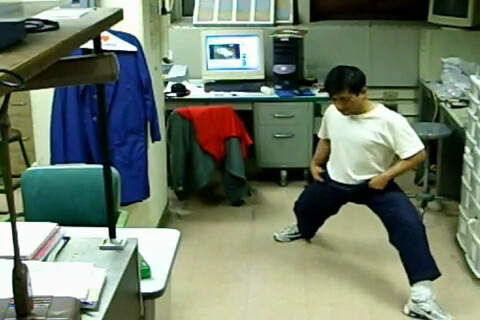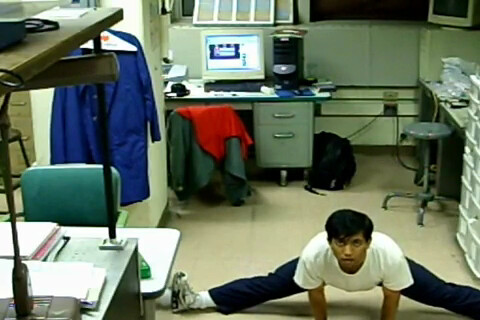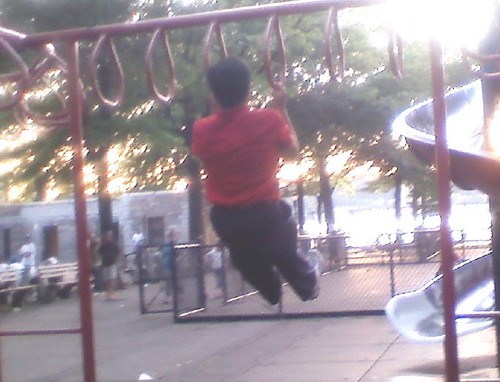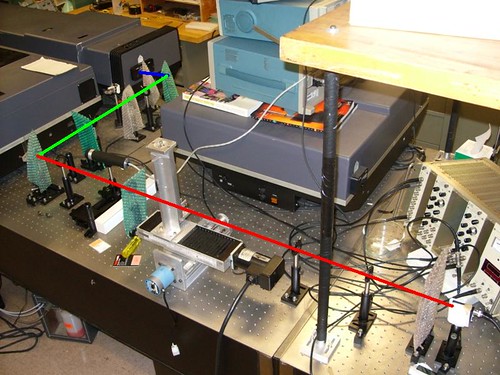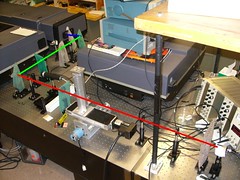I had only seen her, a few minutes before, dancing on the stage; and only just found out that she was an actress in Bangla movies. Thankfully, Bulbul needed no introduction there, backstage, since he was one of the organizers of the show. She was approachable, of course, and she was willing to take a picture. I found it a little bit surprising that this lady, who seemed to pull her hand away only a few short seconds ago, now moved in closer to me than I am accustomed to, very nearly putting me on the defensive. Maybe I have an over-inflated view of my personal space.
We took turns, taking pictures with her (we took a picture, each), and then we left her to relax, after what I am sure was a grueling day. On the way back, I realized what we had just done. We had walked up to a lady, and effectively said "Dekhi-to, dekhit-to, shundori-ta sha-they chobi ni-te dey-naki dekhito!" (Let's see if this dame lets me take a picture of her, with me). To be more politically correct, we had effective said "Apa-moni, apa-moni, apna'r sha-they akta chobi nei, dekhito!" (Let's see if this lady lets me take a picture of her, with me). It wasn't that I had felt very certain that a lady who was recuperating (catching her breath) from her last performance would have acquiesced to two strangers (well, one of them not a complete stranger) wanting fan photos with her. I was not sure she would have balked, either. At the time when Bulbul had asked her for to take those pictures I had felt a certain kind of uncertainty, that things could go this way, or that; and hence, the excitement. It wasn't that I had been standing at the edge of a precipice, deciding whether or not to jump, nor was it that I was skiing down a hill at high speed, deciding what move I would use at that next crest, it was just that uncertainty. It was an uncertainty about the reaction of a human being, a reaction that could have gone this way, or that, but could be heavily influenced by that guile of the asker/requester. The very realization that we had steered a human being's response, albeit so mundane a reaction, was enough to give me an adrenaline rush, for I am more accustomed to seeing this sort or steering in work related circumstances, than in social circumstances. That little, minuscule event finally led me to understand the joy that some guys get at approaching random girls, and asking to take a picture with them. It's not that I would want to go around town, and try to take a picture with every pretty girl I run into, just for the sake of a whole hoard of pictures, but the challenge of taming probabilities is enticing. Of course, let's not treat human beings the same way that I treat sheer rock faces and smooth skiing trails. The latter are stuff to be conquered, but the former are human.
The following is a collection of short clips taken during the show, a concert of Bangla/Bengali songs, in Queens, NYC. Pardon the sound quality: I had not known that my digital camera would stop recording sound while zooming in and out. The concert, itself, was held on 19th July, 2009.
Here are some of the pictures from the event:












This lady said she drove 22 hours, from Dallas, to see this event.


My friend, Bulbul, and I took photos with the performers, ourselves:

Yeah, the above lady is the one I mentioned when I started writing this post.








Wow, these two, above, certainly posed the same.

P.S. I really liked the chorus of the track "Roopban nache komor dulaiya," which the actress danced to, at the event. The closest version that I could find to that soundtrack is located here, though I am not a fan of the kind of dance shown on this video (which is why I did not bother to embed it).

